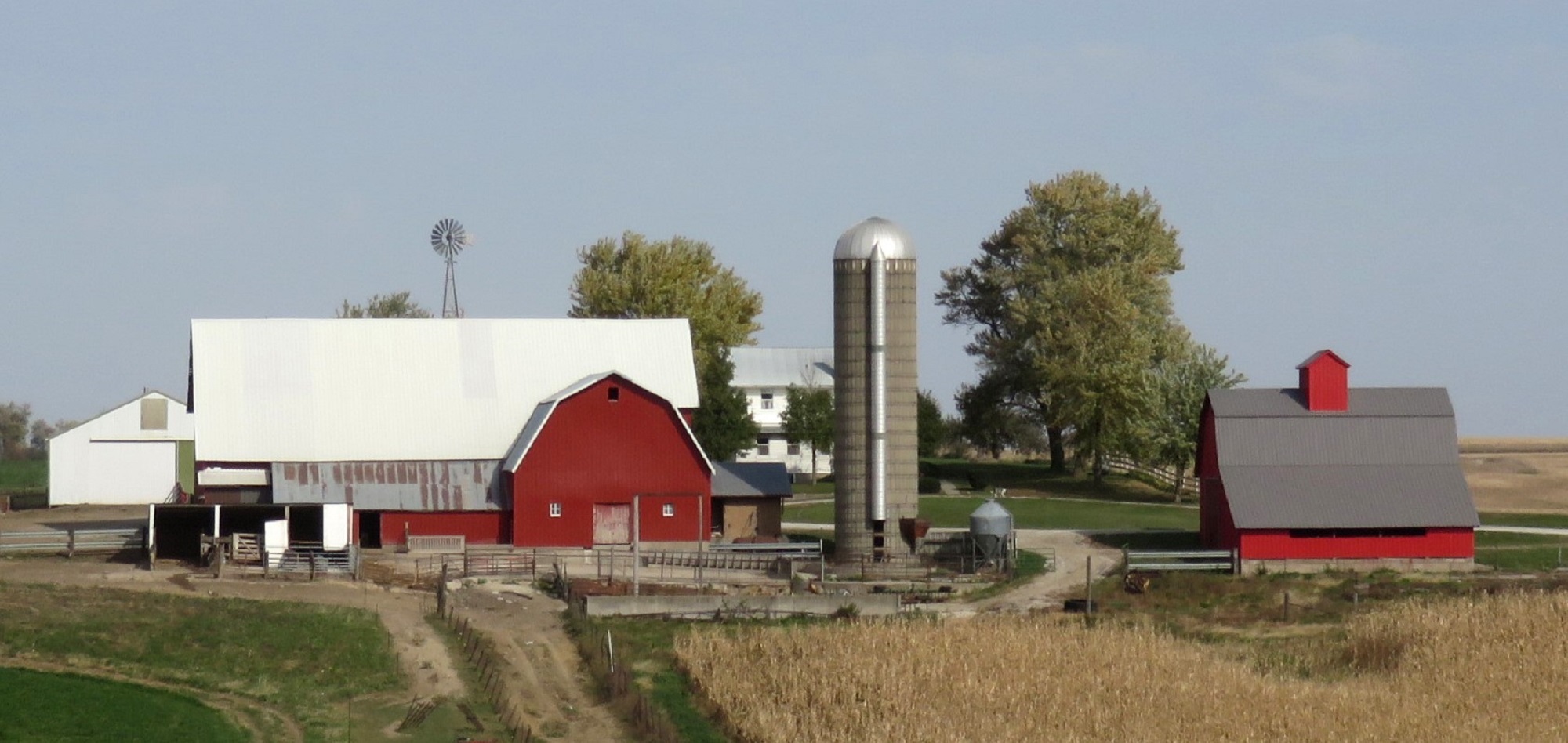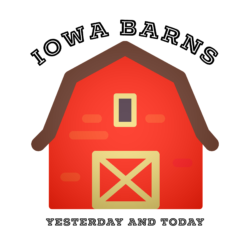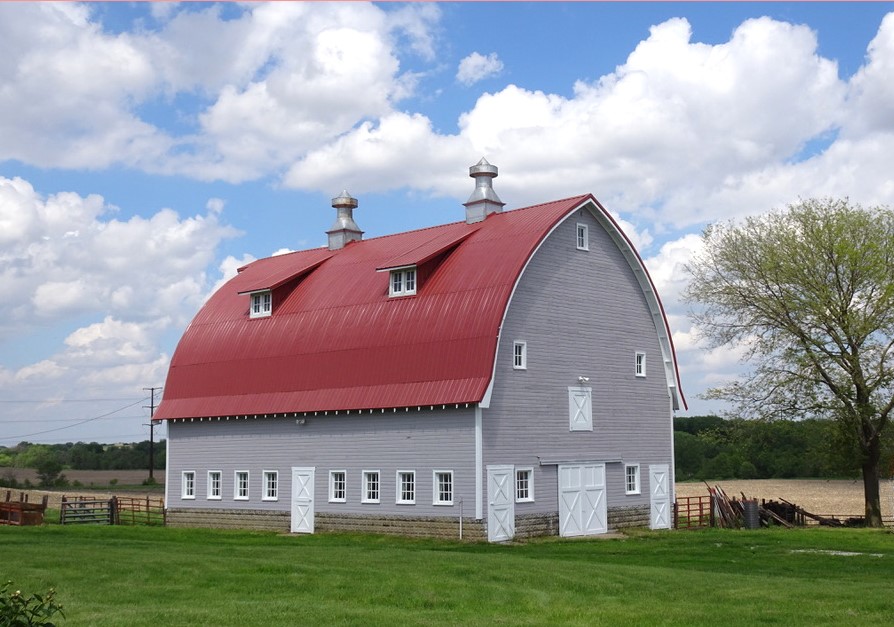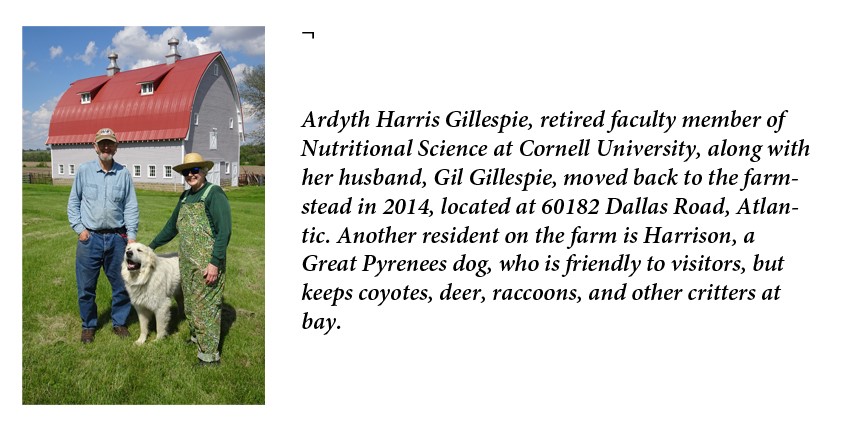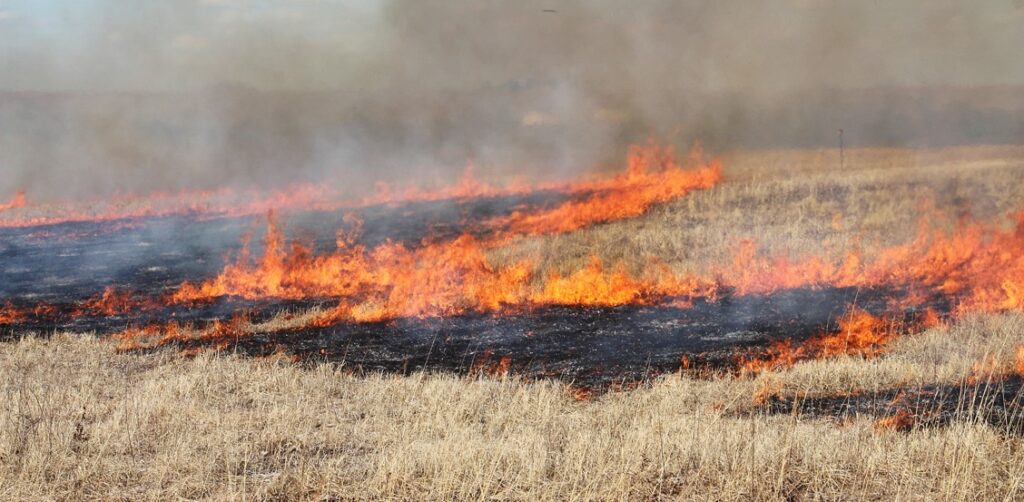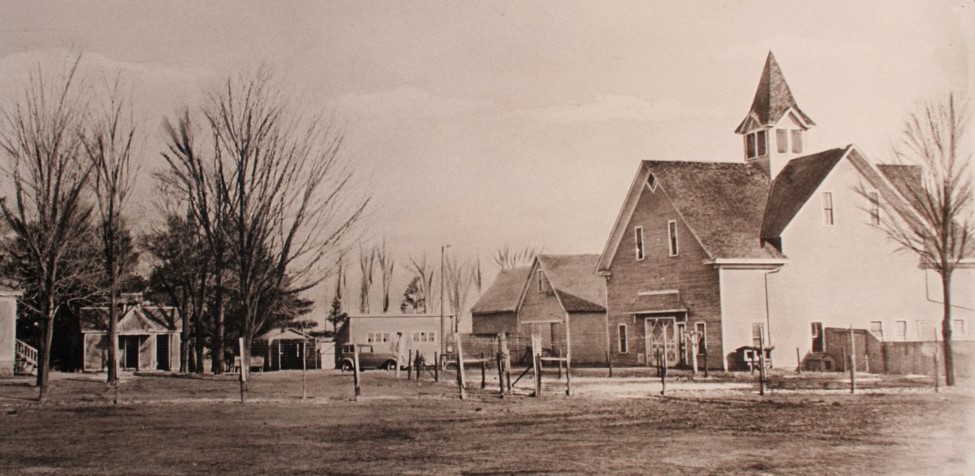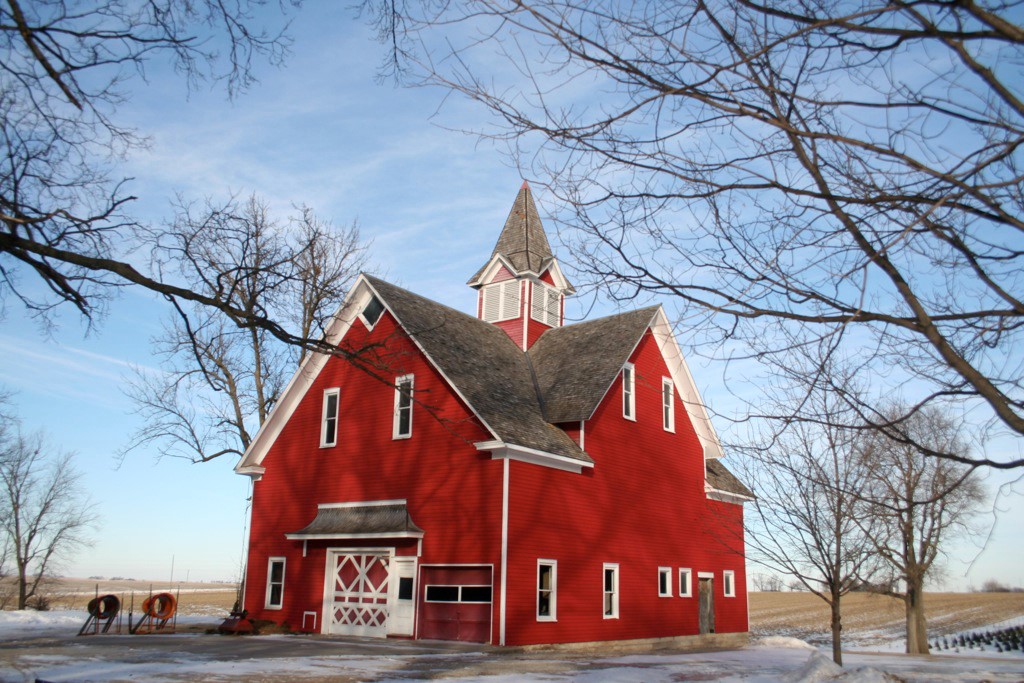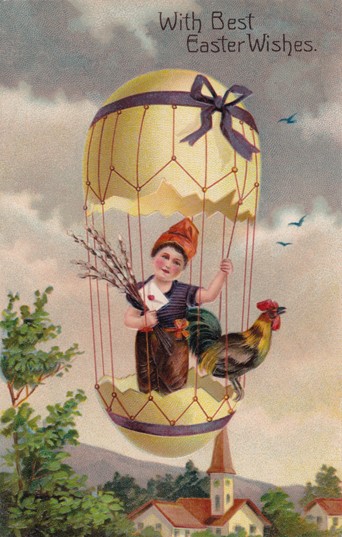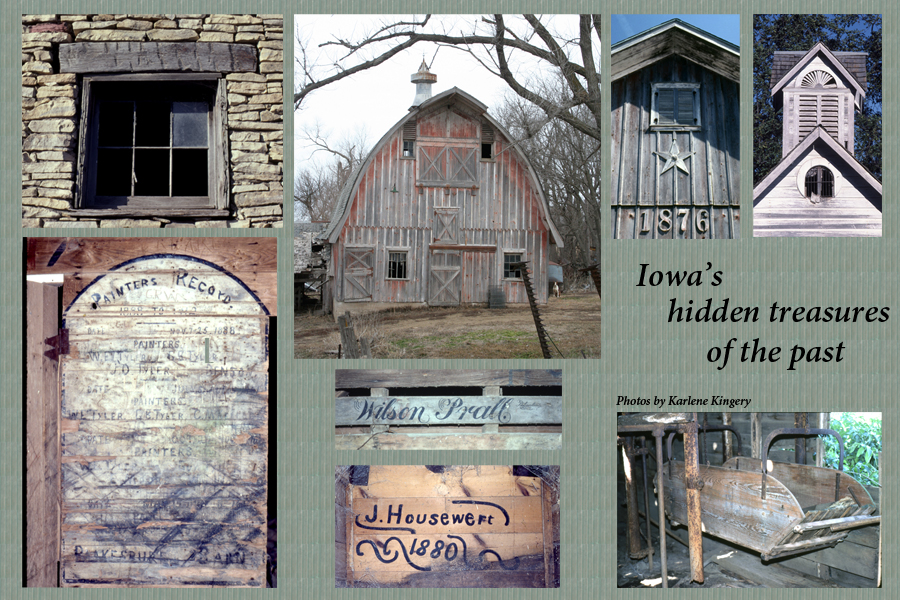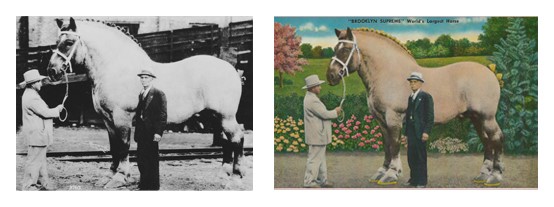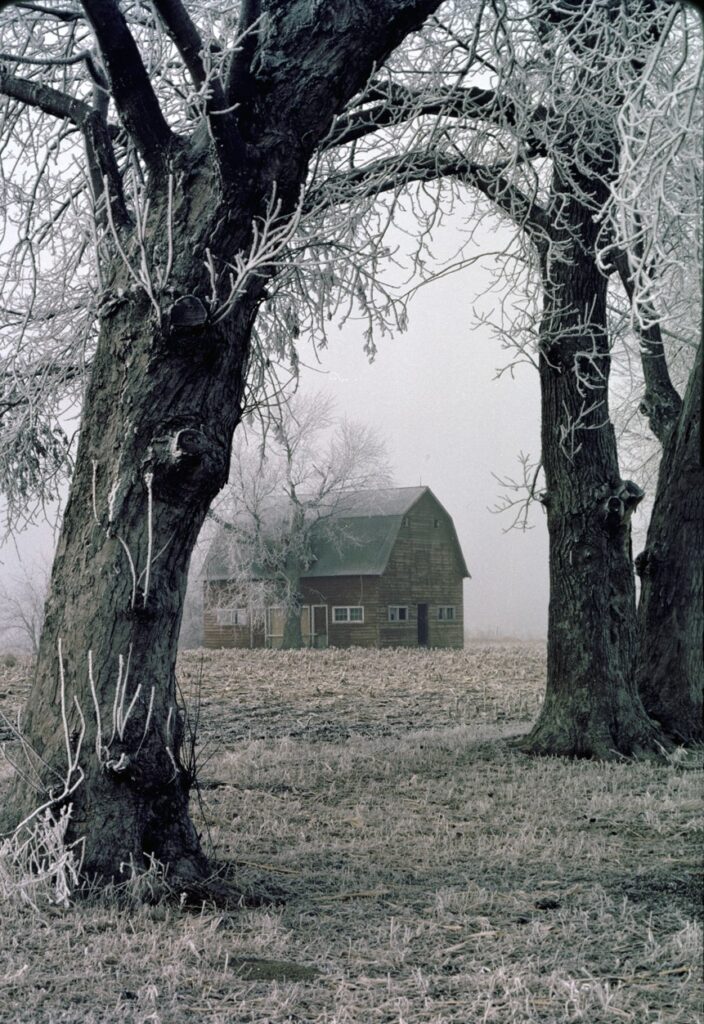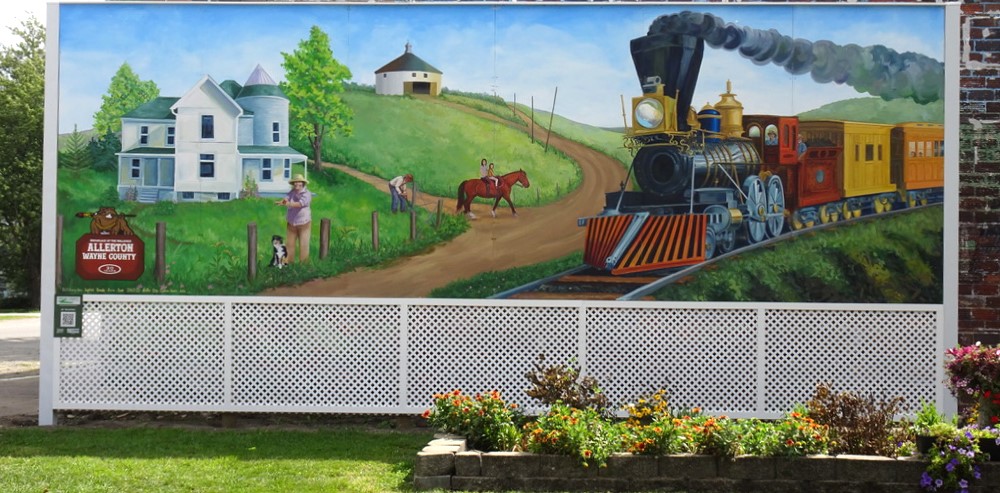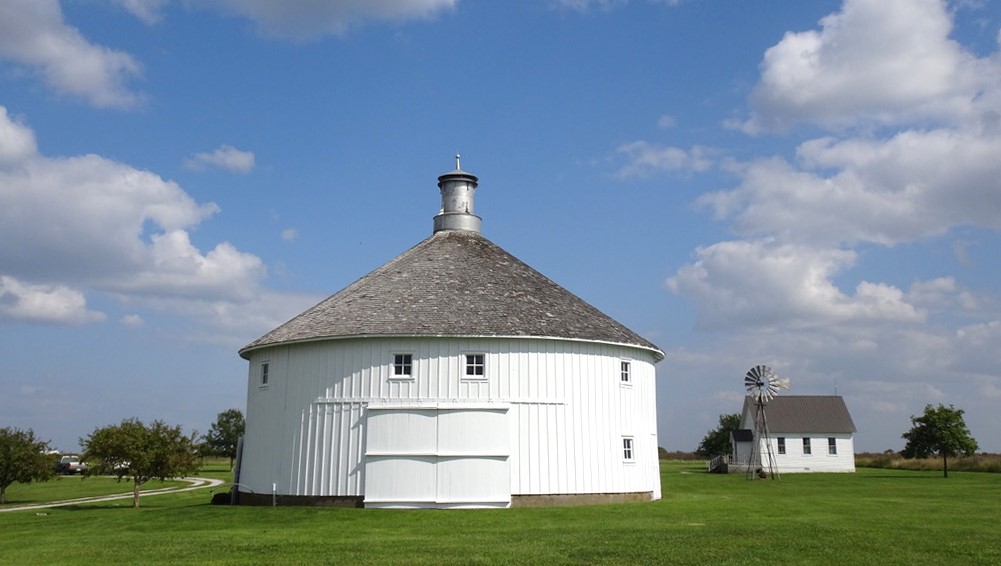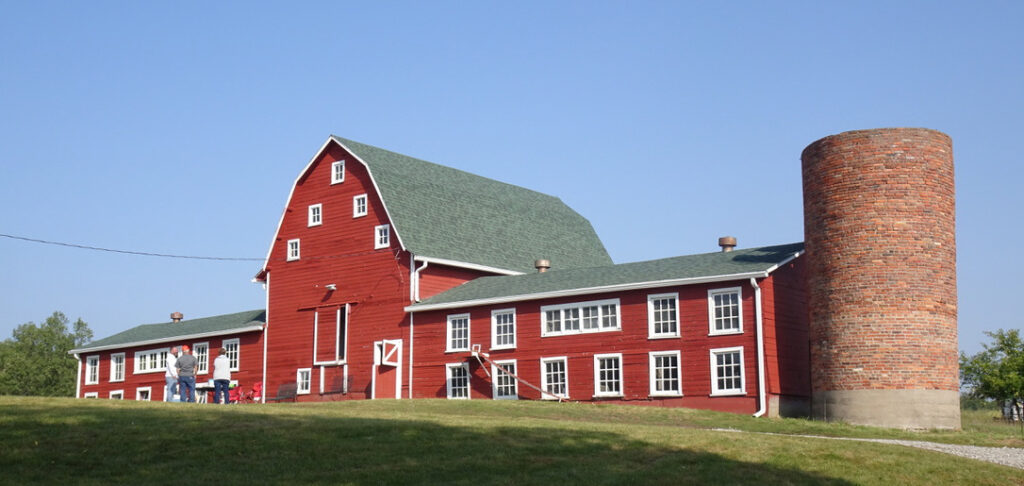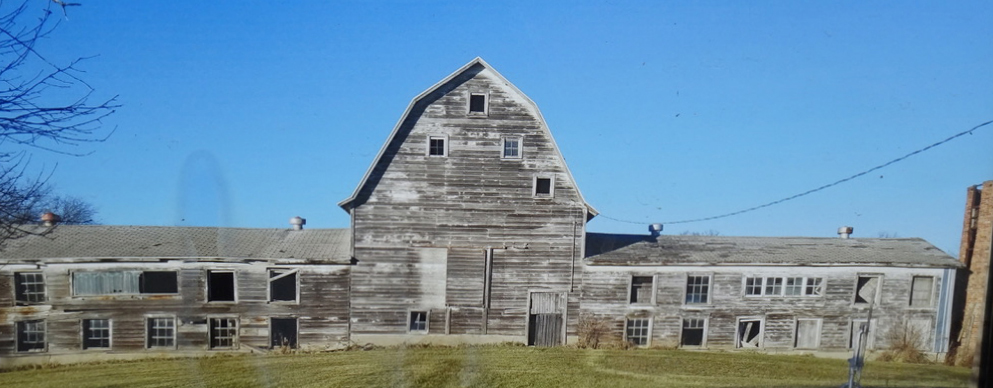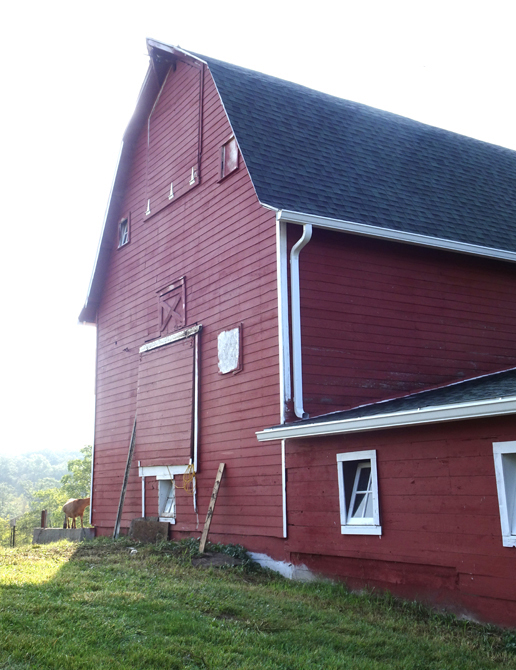What an idea! This grain bin art is found in Carroll County in the heart of the farming community of Coon Rapids. Owned by Todd and Charlotte Heck and painted by Mark Bauer of Bauer Painting, the bins were dedicated October 22, 2022.
The project, “Naturally Iowa Grain Bin Gateway”, began in 2018 when Coon Rapids was looking for an idea of large scale art to revitalize the downtown. After deciding on the grain bins they raised over $77,000 and it became the art project of the year.
Here are three views of this historic project. The bin on the left with the town name and Naturally Iowa includes two persons canoeing on the Middle Raccoon River among the cattails.
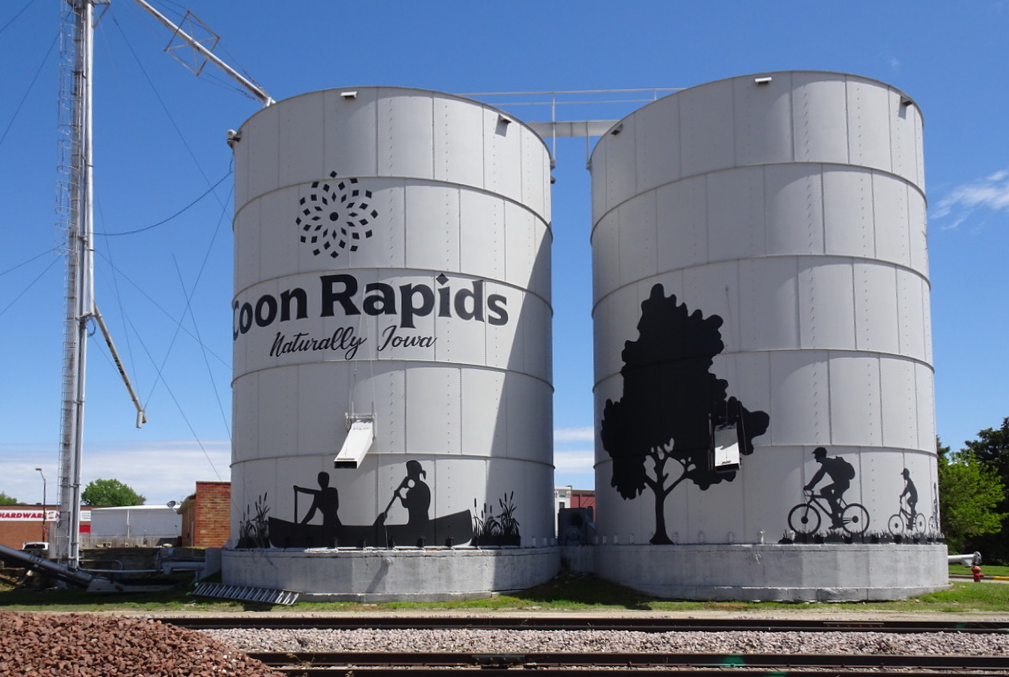
The bin on the right has a family on bicycles followed by their dog. It is a bright sunny day as seen in the next photo, where the rest of the family and the dog can be seen.
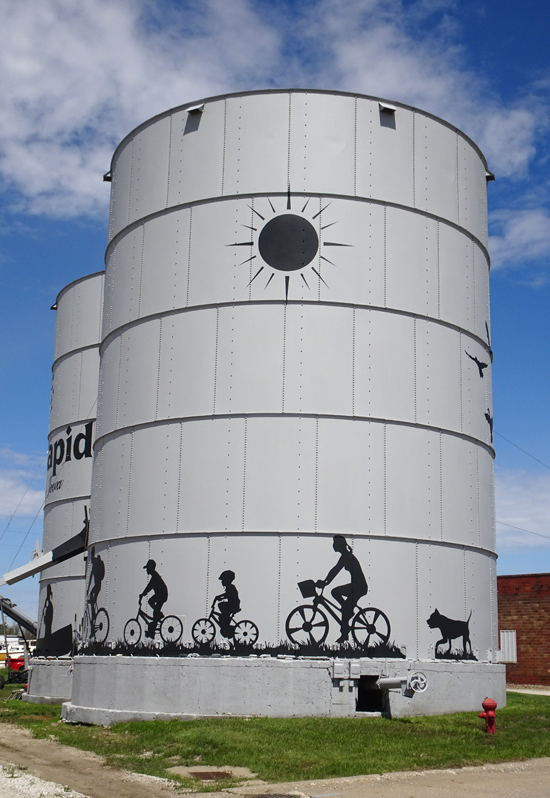
The third photo features a mother and daughter dancing, a flock of geese, a windmill, and a father, the children, and their dog with a telescope to study the stars.
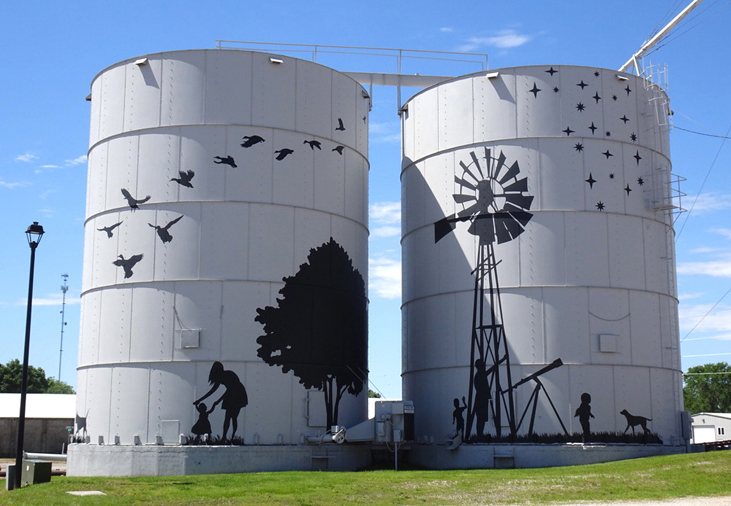
Each bin, which contains corn or beans, is 40 feet tall and 30 feet in diameter, and is located at Highway Street and Sixth Avenue. They are situated along a branch of the BNSF (Burlington Northern Santa Fe) Railroad that passes through the city. What an outstanding project to enhance the image of the city as well as the area. (2024 photos)
